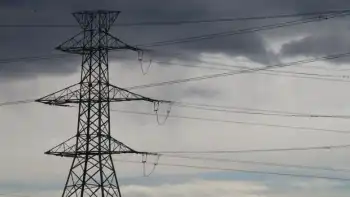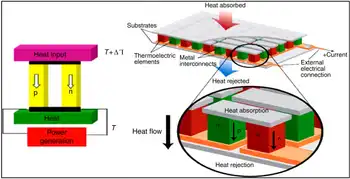Super Grid: a possibility or simply a pipe dream?
By EnergyBiz Insider
Substation Relay Protection Training
Our customized live online or in‑person group training can be delivered to your staff at your location.

- Live Online
- 12 hours Instructor-led
- Group Training Available
The concept behind the super grid, or mega grid, is simple: the build-out and management of inter-system and cross-national linkages between electric transmission systems, using either conventional or superconducting cables that have both been suggested in various proposals and smaller pilot projects. The benefits include connecting renewable energy generators to distant electricity markets, removing various congestion problems, and improving the ability to handle intermittent energy sources, such as wind and solar, by balancing them across vast regions.
Over the ensuing years, the quest to link distantly located renewable electricity sources — such as hydro, wind and solar — via long-distance transmission lines to other geographic areas consuming the power has evolved and developed to take advantage of advancing technology, such as high voltage direct current.
Steven Pullins, president and chief executive officer of Horizon Energy Group, says the premise for long-distance generation has changed over the past decade. "The premise has moved from moving cheap generation at point A to load centers at point B, to obtaining access to remote renewable energy at point A to load centers at point B."
Renewable resources are the differentiator between the super grid of the past and today's vision, says Richard Lordan, the Electric Power Research Institute's technical director of power delivery and utilization. He says a high-voltage superhighway could support wind integration in three ways: First, it could be used to tie wind farms together, as wind can vary widely from region to region, and a bulk transmission system could smooth out its intermittent nature. Second, it could be used to transmit power from the wind farms to the load centers. Finally, it could reach out and connect to balancing sources such as energy storage plants or demand response centers.
To date, the chief obstacles to any general national transmission grid plan have been the significant cost, as well as local NIMBY opposition to siting new transmission lines. However, with regions more connected now than ever before by regional transmission organizations, and competitive merchant generators now also branching out on competitive merchant transmission lines, the possibility of a workable super grid is within reach. There are hurdles to be conquered first, though, which may still prove difficult without legislation delineating state and federal responsibilities in managing a national super grid.
A super grid is technically feasible, according to Pullins. The question, though, isn't whether it's feasible, but whether it's the best plan. "Just because we can does not mean we should. With the growth of distributed energy resources, local solutions to peak load, and a new drive for conservation and energy efficiency, a super grid for long-distance transmission seems less important in the overall picture. This is a strategic question that our industry has talked around, but not addressed straight on yet."
Lordan feels there are other hurdles, too.
"The challenge will be in how the costs are allocated so that those who benefit pay accordingly. Areas with abundant wind will benefit because they have access to customers for their product, and load centers on the coasts benefit by having access to low-cost, clean power. However, the stakeholders in between may not receive the benefit of low-cost wind. They may only get the high-voltage transmission line crossing through the region."
The federal government seems to be looking seriously at its possibilities. U.S. Secretary of Energy and Nobel laureate Dr. Steven Chu has long been an advocate of a national, high-voltage electricity super grid, and even pitched the idea to Samuel Bodman, George W. Bush's energy secretary, as early as 2005. Chu recently reiterated his interest in a high voltage transmission system, calling it "much more efficient transmission."
North Dakota Sen. Byron Dorgan, chairman of the Senate committee on appropriations' subcommittee on energy and water, has said there is an "absolute need" to connect the United States. Citing planning, siting and pricing as issues: "There needs to be a 'connect America' transmission system and we don't have it. If you don't solve all three of them, it won't work."
Pullins feels a super grid development strategy in the United States will likely be led by the regional transmission organizations and independent system operators. That is because of their particular skills in integrated resource planning. But the primary development, he says, will come from a merchant transmission community.
"There are a couple of reasons for this, but primarily the substantial investment requirement will be beyond the willingness of the investor-owned utilities, municipals and cooperatives to risk," Pullins says. "Hence, merchant transmission companies will be the way the industry manages the large capital project risk. This also separates the inevitable question of who benefits and who pays from the IOUs, municipals, and cooperatives where state and local stakeholders are active."
Almost from the first days of speculation about what the American Recovery and Reinvestment Act might hold for the electricity industry, the concepts of smart grid and super grid have melded in public perception. Indeed, incorporating intelligent control technologies in a super grid may require changes to the status quo.
"A super grid strategy will have to address the nexus of a large renewable penetration and substantial distributed resources reflecting from the distribution level into the transmission operations," Pullins says. "I believe this will require a much more distributed control philosophy than the transmission controls can handle today."











